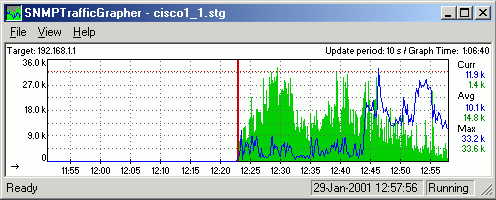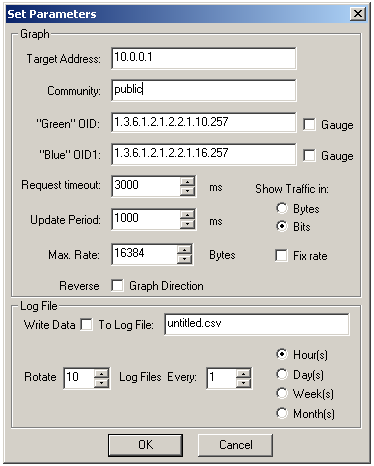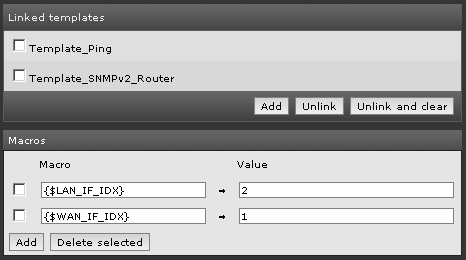As the title says, OpenACS is a TR-069 based automatic configuration server, implementing CPE configuration protocol CWMP.
It’s an opensource project you can find on Source Forge (http://sourceforge.net/projects/openacs/), actually in Beta status.
I put here a brief HowTo to have it running on a fresh Debian setup. Of course, the result of this installation if for testing purpose only, and not for production environment.
EDIT: I tested this on both Debian 4.0 (Etch) and Debian 5.0 (Lenny) and it’s working fine.
I still didn’t test its features, actually I just had it running.
As soon as I get TR-069 capable CPEs and a bit of time to test them I will add more content in the blog!
Install JDK 1.5
Make sure to have “contrib” in your apt source list; if you don’t have, add and update aptitude.
nano /etc/apt/sources.list
deb http://YOUR_MIRROR/debian/ etch main contrib
deb-src http://YOUR_MIRROR/debian/ etch main contrib
Install some utilities to build JDK Debian package:
apt-get install java-package fakeroot
As non-root user, get Sun JDK 5.0 Update 17 from http://java.sun.com/j2se/1.5.0/download.jsp (non-RPM file):
wget URL
Build the Debian package
fakeroot make-jpkg jdk-1_5_0_17-linux-i586.bin
Install the .deb package (as root)
dpkg -i sun-j2sdk1.5_1.5.0+update17_i386.deb
Install JBoss
Get JBoss Application Server 4.2.2 zip file from http://www.jboss.org/download/:
wget URL
Unzip it:
unzip jboss-4.2.2.GA.zip -d /opt/
cd /opt
mv jboss-4.2.2.GA/ jboss
Run the server to test it:
cd /opt/jboss/bin
./run.sh -b 0.0.0.0
If the server fails starting, check it’s using the right Java VM; you can edit the bin/run.conf file and set JAVA_HOME=”/usr/lib/j2sdk1.5-sun”
Test the server: browse the homepage at http://YOUR_IP_ADDRESS:8080/
Hit CTRL+C to stop the server.
Install MySQL
apt-get install mysql-server-5.0
Install MySql Connector/J
Get Connector/J from http://dev.mysql.com/downloads/connector/j/5.1.html
wget URL
Extract and put mysql-connector-java-5.1.7-bin.jar into jboss/server/default/lib/
tar -xzvf mysql-connector-java-5.1.7.tar.gz
cd mysql-connector-java-5.1.7
mv mysql-connector-java-5.1.7-bin.jar /opt/jboss/server/default/lib/
Compile and deploy OpenACS
Install Apache Ant:
apt-get install ant
Get openacs-src file (openacs-src-0.03.zip) from SourceForge:
wget URL
unzip openacs-src-0.03.zip
cd openacs
Edit build.properties and set the right path to jboss (jboss=/opt/jboss/server/default)
nano build.properties
Edit the web.xml file and set the right path to the firmware directory (org.openacs.fwbase context-param):
nano acs-war/web/WEB-INF/web.xml
[… cut …]
<context-param>
<description>Path for firmware images</description>
<param-name>org.openacs.fwbase</param-name>
<param-value>/firmware/</param-value>
</context-param>
[… cut …]
Run ant to build OpenACS
ant
Copy dist/acs.ear to jboss/server/default/deploy:
cp dist/acs.ear /opt/jboss/server/default/deploy/
Create and edit jboss/server/default/deploy/openacs-ds.xml, configuring data source
nano /opt/jboss/server/default/deploy/openacs-ds.xml
openacs-ds.xml:
<?xml version="1.0" encoding="UTF-8"?>
<datasources>
<local-tx-datasource>
<jndi-name>ACS</jndi-name>
<connection-url>jdbc:mysql://localhost/ACS</connection-url>
<driver-class>com.mysql.jdbc.Driver</driver-class>
<user-name>openacs</user-name>
<password>openacs</password>
<min-pool-size>5</min-pool-size>
<max-pool-size>20</max-pool-size>
<idle-timeout-minutes>5</idle-timeout-minutes>
</local-tx-datasource>
</datasources>
Create openacs-service.xml in jboss/server/default/deploy/jms
nano /opt/jboss/server/default/deploy/jms/openacs-service.xml
<?xml version="1.0" encoding="UTF-8"?>
<server>
<mbean code="org.jboss.mq.server.jmx.Queue" name="jboss.mq.destination:service=Queue,name=acsQueue">
<depends optional-attribute-name="DestinationManager">jboss.mq:service=DestinationManager</depends>
</mbean>
</server>
Create ACS database and openacs user on MySQL, as in openacs-ds.xml:
mysql
CREATE DATABASE ACS;
GRANT ALL ON ACS.* TO openacs IDENTIFIED BY 'openacs';
Create ACS tables:
echo "CREATE TABLE HardwareModelBean (
id int(11) NOT NULL auto_increment,
oui varchar(250) default NULL,
hclass varchar(250) default NULL,
DisplayName varchar(250) default NULL,
manufacturer varchar(250) default NULL,
PRIMARY KEY (id)
);
CREATE TABLE HostsBean (
id int(11) NOT NULL auto_increment,
serialno varchar(250) default NULL,
url varchar(250) default NULL,
configname varchar(250) default NULL,
currentsoftware varchar(250) default NULL,
sfwupdtime timestamp NOT NULL default CURRENT_TIMESTAMP on update CURRENT_TIMESTAMP,
sfwupdres varchar(250) default NULL,
cfgupdres varchar(250) default NULL,
lastcontact timestamp NOT NULL default '0000-00-00 00:00:00',
cfgupdtime timestamp NOT NULL default '0000-00-00 00:00:00',
hardware varchar(250) default NULL,
cfgversion varchar(250) default NULL,
props longblob,
hwid int(11) default NULL,
username varchar(250) default NULL,
password varchar(250) default NULL,
authtype int(11) default NULL,
customerid varchar(250) default NULL,
conrequser varchar(250) default NULL,
conreqpass varchar(250) default NULL,
PRIMARY KEY (id)
);
CREATE TABLE ConfigurationBean (
name varchar(250) NOT NULL,
hardware varchar(250) default NULL,
config longblob,
filename varchar(250) default NULL,
version varchar(250) default NULL,
PRIMARY KEY (name)
);
CREATE TABLE ScriptBean (
name varchar(250) NOT NULL,
script longblob,
description varchar(250) default NULL,
PRIMARY KEY (name)
);
CREATE TABLE SoftwareBean (
hardware varchar(250) NOT NULL,
version varchar(250) NOT NULL,
minversion varchar(250) default NULL,
url varchar(250) default NULL,
size bigint(20) NOT NULL,
filename varchar(250) default NULL,
PRIMARY KEY (hardware,version)
);" | mysql ACS;
Create the firmware directory:
mkdir /firmware
Run the server:
cd /opt/jboss/bin
./run.sh -b 0.0.0.0
Browse the OpenACS web interface at http://YOUR_IP_ADDRESS:8080/openacs/index.jsf
Some useful links:
OpenACS Wiki: http://openacs.wiki.sourceforge.net/
Getting JDK 1.5 and Tomcat 5.5 up and running in Debian Linux: http://nileshk.com/node/36
JBoss on Debian quickstart: http://lorenzod8n.wordpress.com/2008/03/02/jboss-on-debian-quickstart/


